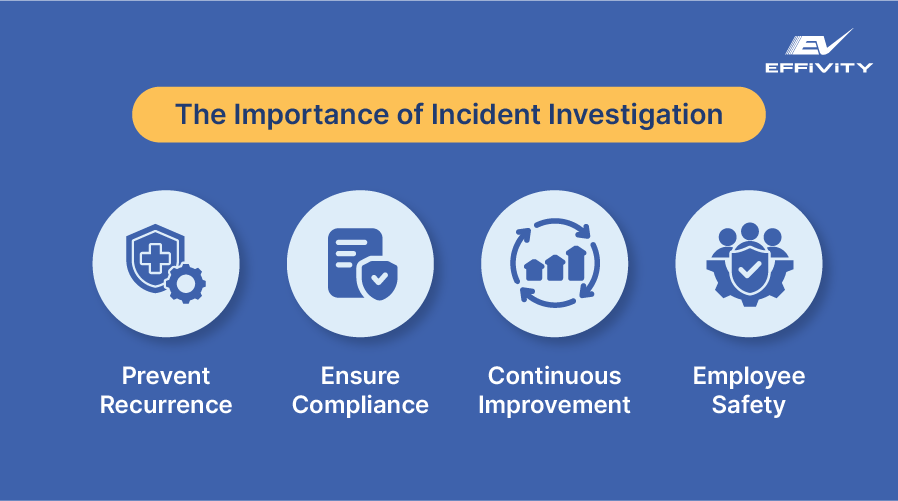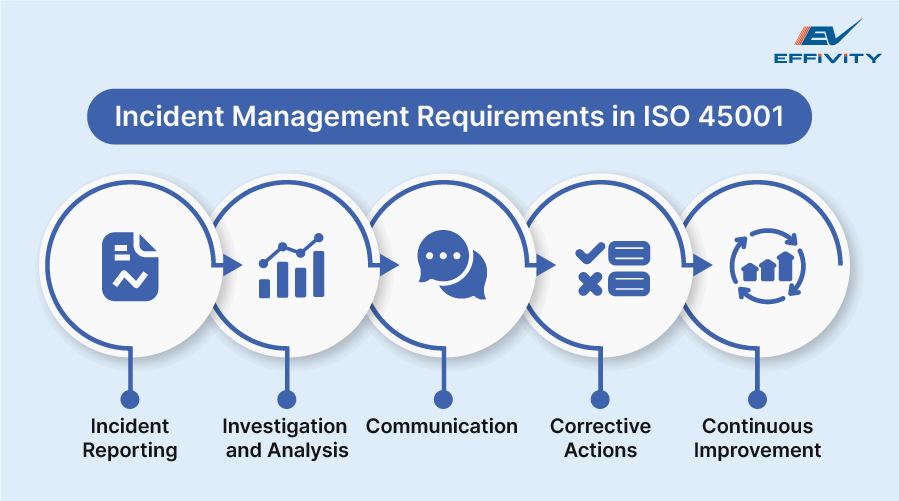When it comes to ensuring workplace safety, no organization can fully prevent any incident from happening. What they can do, however, is to investigate and analyse the incidents, determine the causes, and take necessary actions to prevent them from recurring.
Incident investigation in the OHSAS 18001 way becomes crucial for ensuring a safe workplace, minimizing risks, and maintaining compliance with occupational health and safety standards. An incident in a workplace is a work-related event that may or may not lead to ill health, injury, or a fatality and warrants investigation.
The OHSAS 18001 standard, replaced by ISO 45001, provides a comprehensive framework for conducting effective incident investigations. By adhering to the requirements of this standard, organizations can systematically identify the root causes of incidents, implement corrective actions, and prevent future occurrences.
The Importance of Incident Investigation
Incident investigation is a systematic process of examining workplace incidents to uncover their underlying causes. These investigations are vital for several reasons:

-
Prevent recurrence:
Identifying the root causes of incidents helps you implement measures to prevent similar events in the future. As a result, you can easily prioritize safety within the organization and maintain compliance. -
Ensure compliance:
By implementing an effective OHSAS system software under the regulatory framework, organizations can identify and manage risks in the OHSAS 18001 way. Adhering to the standards will ensure compliance with legal and regulatory requirements, boosting stakeholder confidence and customer loyalty in your organization. -
Continuous improvement:
Effective incident investigations provide valuable insights that contribute to the continuous improvement of health and safety management systems. -
Employee Safety:
By addressing the root causes of various incidents, organizations can foster a safety-first culture, reducing the risk of illness or injury and keeping employees happy.
How to Carry Out Incident Investigation the OHSAS 18001 Way
1. Identify the incident- what happened?
The first step for effective incident investigation in OHSAS is to determine what has happened, where it has happened, and the parties involved. The objective is to identify who is responsible for the incident and where the OHSAS system failed.
As a result, creating a detailed description of the incident is important as it will allow you to achieve these objectives and take necessary steps to prevent the same incident from recurring.
Moreover, in some cases, you might not have the authority to investigate an incident and legal authorities might have to be involved. For instance, in case of a fatal accident, police will need to be involved. So, you must proactively assess the incident and inform relevant authorities immediately.
2. Analyse the incident- what failed?
The incident investigation aims to determine which aspect of your occupational health and safety management system failed and why. This is where you need to identify the root cause of the incident by looking at all the possibilities.
Once you’ve listed the possible causes, compare them to determine the most probable ones and look for evidence supporting your results.
A root cause is a cause that initiated a sequence of events or a condition that led to the incident. If the facts do not back up the root or the source you are considering, it is discarded; otherwise, it should be treated as a probable cause. The real root cause is the source that directly triggered the incident.
Here are the steps you need to take while analysing the real cause of an incident-
- Conduct physical research
- Observe the process to establish the mechanism through which the incident occurred.
- Repeat and assess what happened in a controlled environment
- Interview any person who may have witnessed what caused the incident
- Consult with employees who are familiar with the processes
Further, it is important to ask open-ended questions while interviewing the people involved in the incident to arrive at an accurate cause.
In the end, the result of your incident investigation helps identify which part of your OHSAS system has failed, what corrective actions should be taken, and what changes are required to improve the system.
The incident investigation report must contain all findings of the investigation and must be delivered to management. Once the investigation report has been compiled, management can determine which corrective actions should be implemented.
3. Follow-up on the incident- how can we prevent it?
When you have implemented accurate corrective actions, it is important to follow up to establish whether the corrective actions have removed the root cause. If corrective actions have not given the desired results, you need to identify and implement new corrective actions to ensure that the same incident will never happen again.
Incident Management Requirements in ISO 45001
ISO 45001, which replaced OHSAS 18001, introduces new requirements for incident management. This standard emphasizes a proactive and systematic approach to identifying and addressing risks, with a strong focus on worker participation and organizational context.
These requirements include:

1. Incident reporting
Organizations must establish processes for the timely reporting of incidents. This will ensure that all incidents, including near misses, are documented and can be analysed to prevent recurrences.
2. Investigation and Analysis
You must investigate the incident to determine underlying causes. The investigation should consider not only the immediate causes but also the root causes, including related hazards.
3. Communication
The findings of incident investigation actions must be appropriately documented and communicated to relevant stakeholders, including workers, management, and external parties, as necessary. The standard emphasizes sharing the learning from an incident and seeking employee feedback and suggestions for proactive incident management.
4. Corrective Actions
Organizations need to implement adequate corrective actions to address the root causes based on the investigation. These actions should aim to prevent recurrence and mitigate similar risks.
5. Continuous Improvement
Incident data should be used to promote continuous improvement in the occupational health and safety management system. This involves analysing trends, identifying areas for improvement, and updating risk assessments and procedures accordingly.
In Conclusion
Incident investigation, as outlined in the OHSAS 18001 standard, is a critical component of maintaining a safe and healthy workplace.
With a proactive approach to incident reporting, investigation, and management, organizations can prevent recurrences and ensure employee well-being and safety. Besides, it will ensure compliance with the OHSAS 18001 standard, which will help enhance safety and foster a culture of transparency and continuous learning.
Organizations committed to occupational health and safety must prioritize thorough and effective incident investigations as part of their overall management system.






























